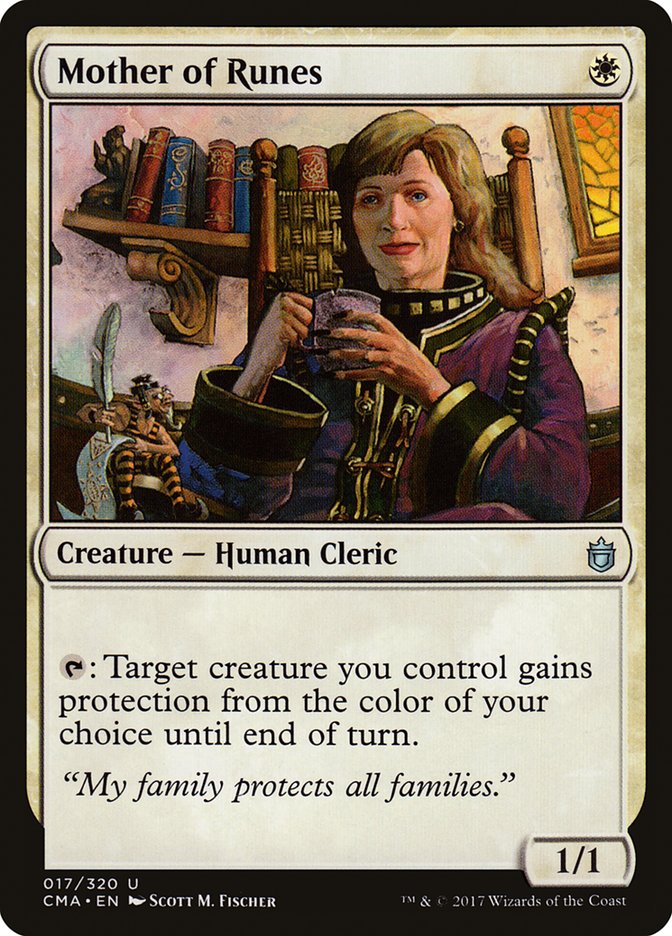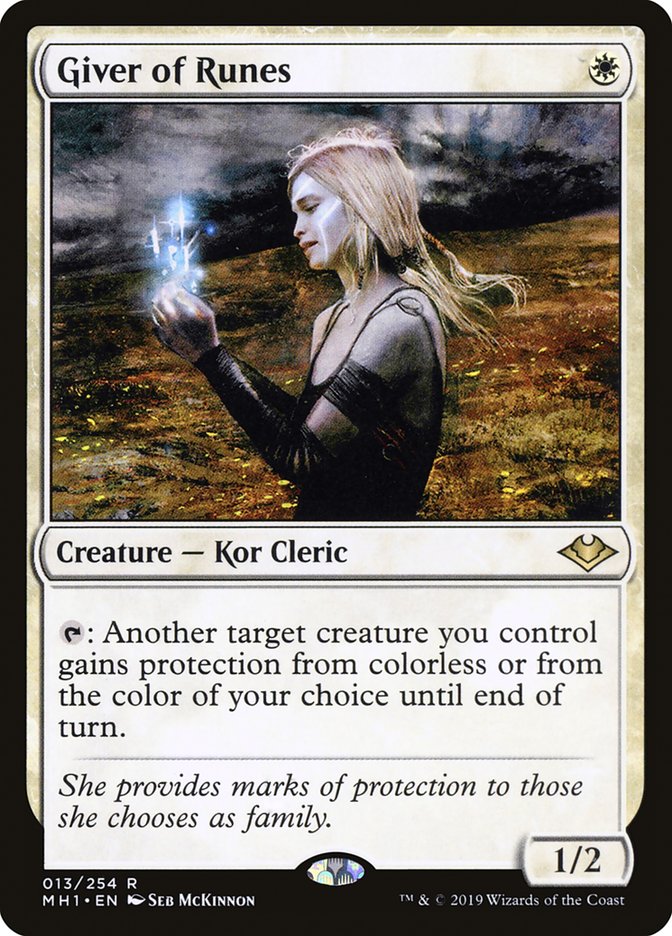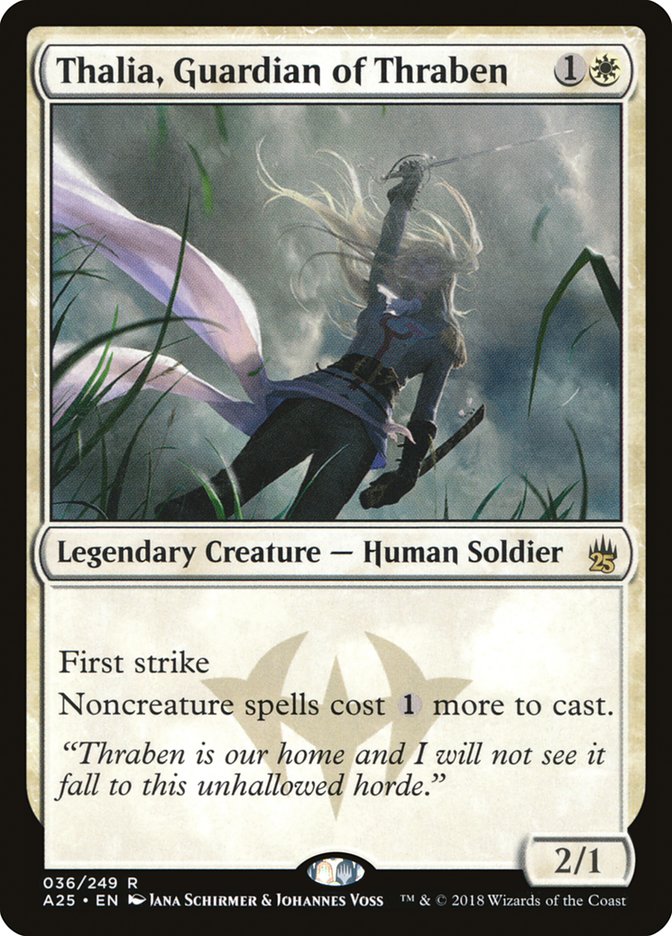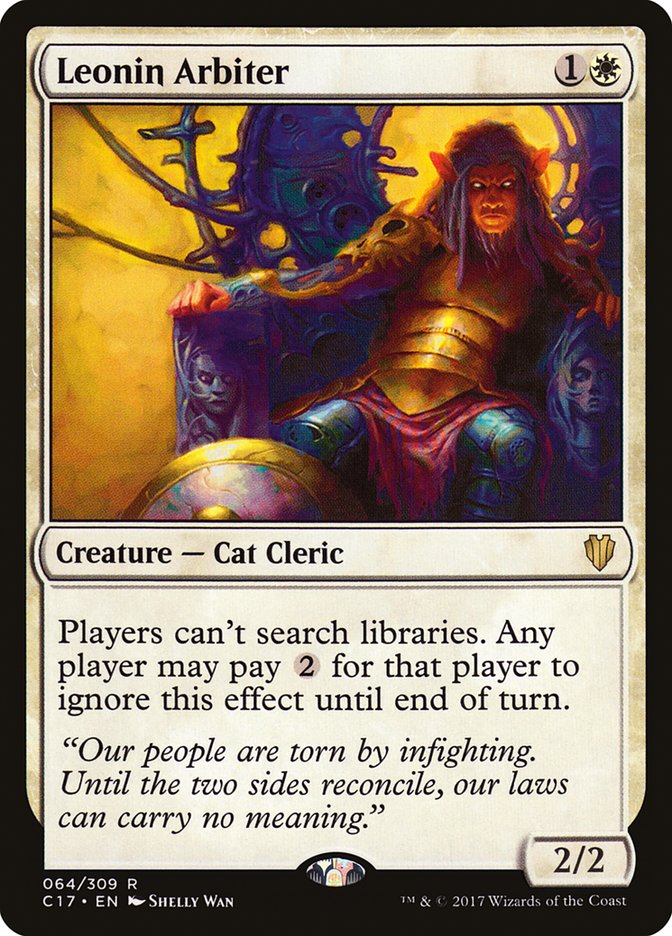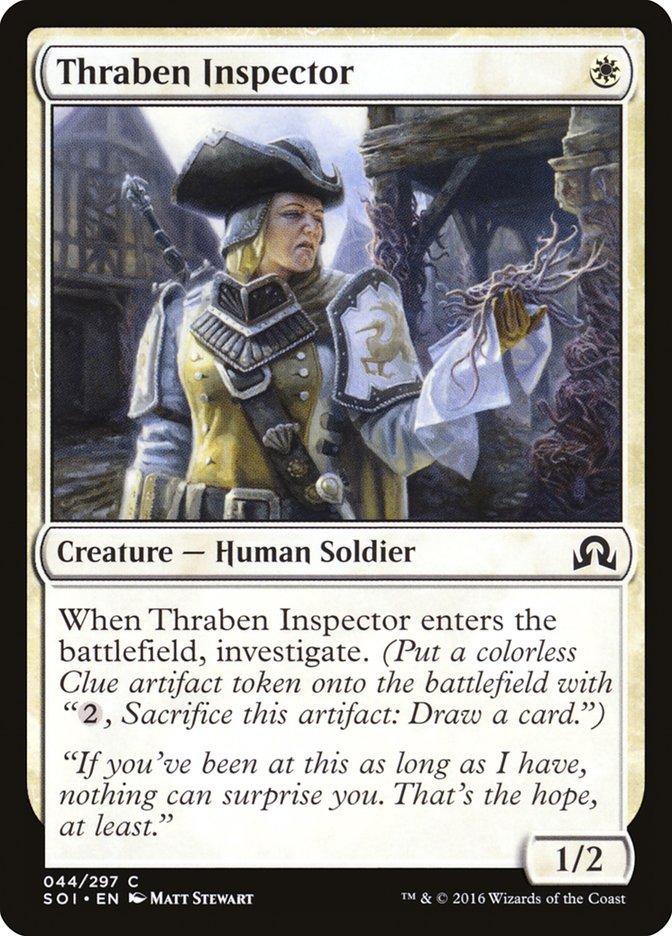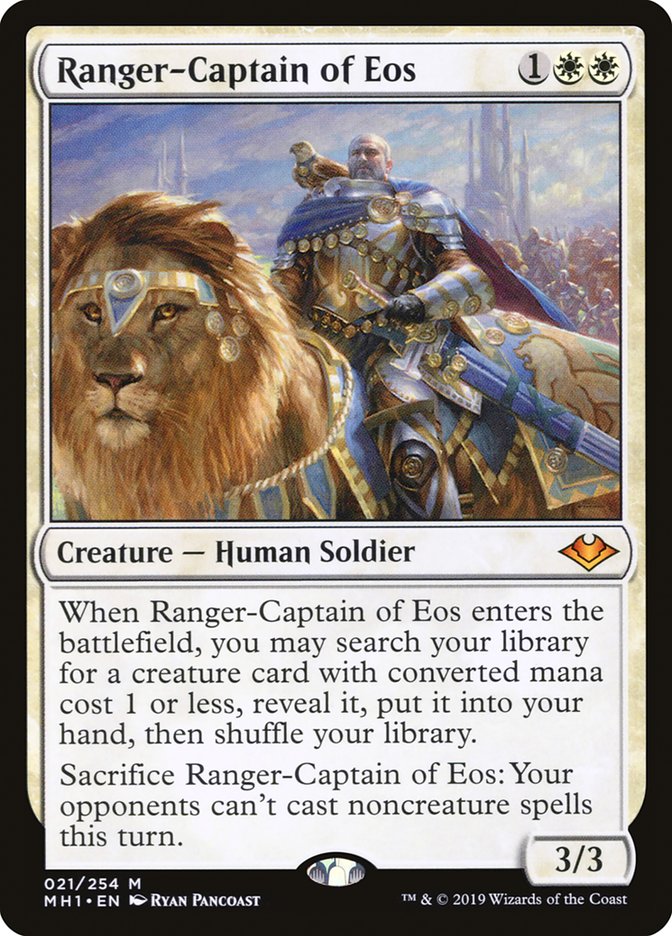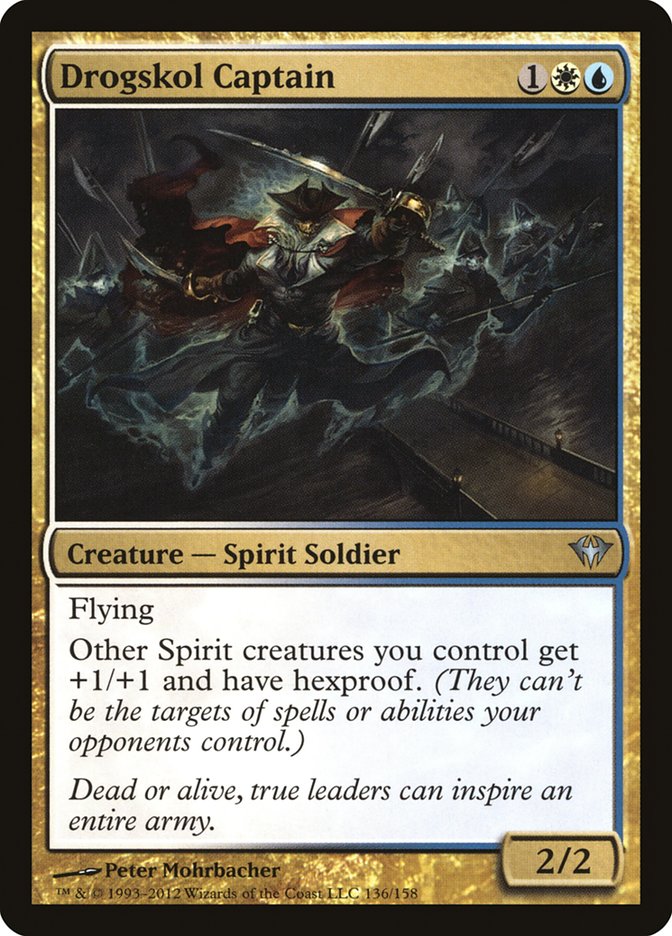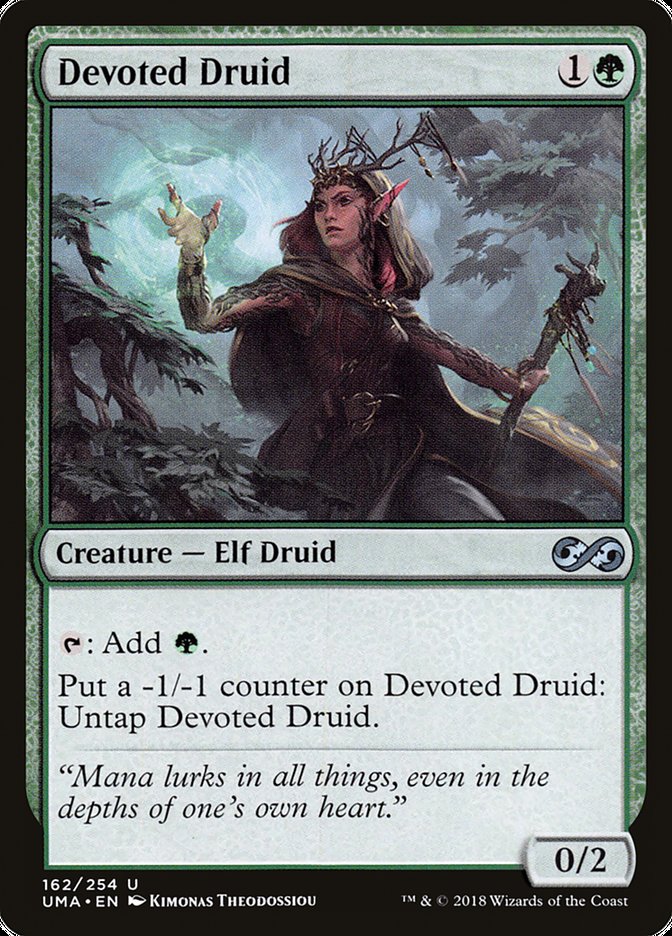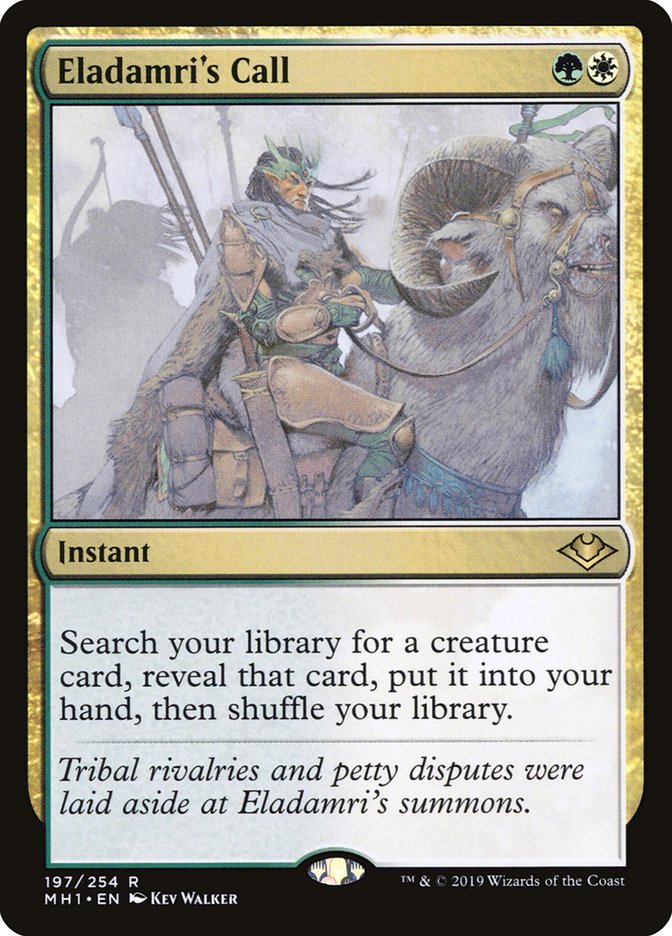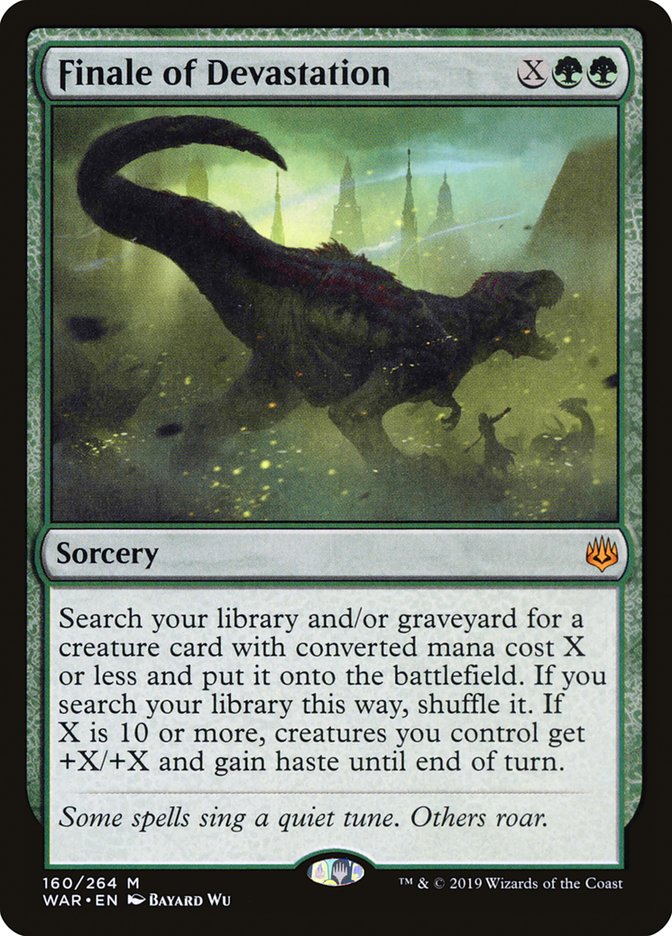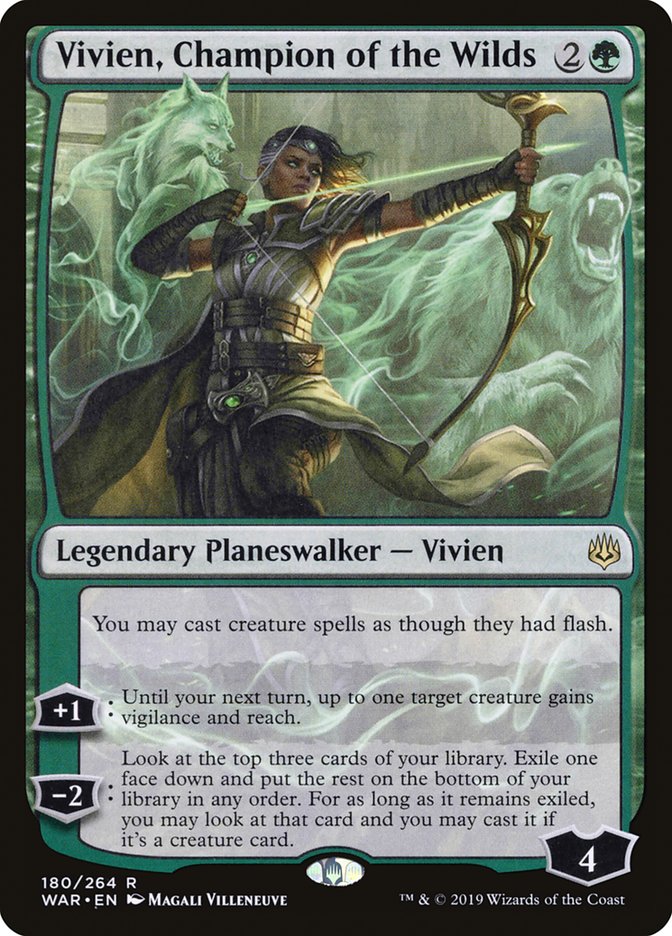When it comes to Legacy, I’m known for playing two decks: Storm and Elves. But in my first year on the SCG Tour, I wasn’t comboing anyone. In fact, I was playing just about the fairest deck possible – Maverick. I chose the deck over Temur Delver and Esper StoneBlade after looking at the results of a Grand Prix in Indianapolis, mainly due to the power of Thalia, Guardian of Thraben and Wasteland in a format defined by cheap noncreature spells, and after Top 8ing my first Open with the deck(I promise that’s me on the right – you can tell because of how thoroughly I get blown out in Game 2), I was hooked.
One of the cards that was consistently impressive in any fair matchup was Mother of Runes. When cast on Turn 1, it represented a must-answer threat or it would soak up two removal spells by itself, leaving your more powerful creatures to dominate the game. Later on it could force a large Knight of the Reliquary or Scavenging Ooze through a blocker or allow your Umezawa’s Jitte to trigger in the mirror against an opposing Mother. For a one-mana creature, its impact on the game was incredible and I always hoped to have one in my opening hand in any fair matchup.
It’s been years since I played Maverick in Legacy, but it might just be time to relive my glory days in Modern with the recently previewed Giver of Runes:
Relative to Mother of Runes, we’re getting an extra point of toughness while losing the ability to protect itself. Also, Giver isn’t a Human, which I imagine everyone not named Dylan Hand or Brian Basoco is happy about, so let’s focus on the first two differences.
On the balance, I think it’s clear that this tradeoff is a downgrade. The extra point of toughness is helpful against cards like Golgari Charm and Zealous Persecution, but those see significantly more play in Legacy than Modern, where the creatures are larger and True-Name Nemesis doesn’t exist. Meanwhile, not protecting itself means that Giver of Runes, even when not summoning sick, is going to trade for a single removal spell.
Any time we see a card that’s a clear downgrade from a previous one, the reaction is going to be disappointment. No one likes to be second-best, including Magic cards, but when the basis for comparison is a 1/1 creature that sees play in Legacy, there’s plenty of wiggle room in which a Modern staple can operate.
The key shift in perspective is to focus on what we’re still getting in Giver or Runes, rather than what we’re not getting relative to Mother. And what we’re getting is the best Flagbearer in Magic’s history. When cast on Turn 1, Giver of Runes clears the way for whatever follows by either surviving and thus protecting the following creatures, or drawing out a removal spell and forcing the opponent to have more if they want to survive the coming onslaught.
Of course, given enough time they will find more removal, so in order to maximize the card we need to put our opponents to the test as quickly as possible. That means pairing Giver of Runes with creatures that cost two or three mana which have a significant impact on the game when left unanswered. With Giver of Runes offering protection, it doesn’t matter that much if these creatures are fragile, as they are going to stick much more often than before.
The first such pairing that comes to mind is straight from Maverick: Thalia, Guardian of Thraben. When it lives, it can shut down Izzet Phoenix and be hassle to a wide range of other decks from Azorius Control to Dredge and its Life from the Loam engine. We could try to jam Giver of Runes into Humans to complete the pairing, but that stretches the manabase much too far, even with Aether Vial, so I’m looking at a fringe deck: Death and Taxes.
Creatures (29)
- 4 Flickerwisp
- 4 Leonin Arbiter
- 3 Blade Splicer
- 4 Thalia, Guardian of Thraben
- 3 Restoration Angel
- 3 Thraben Inspector
- 1 Walking Ballista
- 4 Giver of Runes
- 3 Ranger-Captain of Eos
Lands (23)
Spells (8)

Much like the Legacy original, this deck is all about mana denial. Thalia combines with Leonin Arbiter, another great follow-up to Giver of Runes, to cripple the opponent’s early development, while Blade Splicer and the various blink effects can produce a huge battlefield of creatures to close the game while the opponent is struggling to draw out of their mana issues.
This deck has suffered from two issues in Modern. First, its two-drops are easy to remove with Fatal Push, Lightning Bolt, etc. and Giver of Runes is perfect for mitigating that issue. Second, it lacked solid one-mana plays outside of Aether Vial, and thus was rather slow getting on the battlefield, especially since it wants to follow up Leonin Arbiter with Ghost Quarter and Field of Ruin. Giver of Runes gives the deck another playable one-drop on top of Thraben Inspector.
Neither card may seem like much, but this deck has a very tight window with which to close the game before its opponent’s more powerful cards take over, and any damage Thraben Inspector can get in is valuable, as is Giver of Runes’s ability to get Golem tokens through a wall of blockers or protect key fliers from removal.
With Modern Death and Taxes, the struggle is to close the game in the window provided by the mana denial in the deck, and Giver of Runes makes it significantly easier to do so, even if it’s not entering the red zone all that often.
The additional one-drops also help the deck incorporate another powerful card from Modern Horizons: Ranger-Captain of Eos. Giver of Runes is the go-to target when you need to dominate combat, while Thraben Inspector provides a double dose of card advantage. Walking Ballista is a bit of tech borrowed from Mono-White Martyr lists that can take over late in a game when both players are drawing off the top and flush with lands.
Should Ranger-Captain of Eos fail to pull its weight, I’d want to move back to the Eldrazi list with Eldrazi Displacer and Thought-Knot Seer, both of which are great cards to protect with Giver of Runes and come fairly easily by incorporating Eldrazi Temple and an extra Shefet Dunes into the manabase.
Another fringe Modern deck that is begging for another one-mana play is Azorius Spirits:
Creatures (30)
- 2 Phantasmal Image
- 1 Geist of Saint Traft
- 2 Thalia, Guardian of Thraben
- 4 Drogskol Captain
- 3 Rattlechains
- 4 Spell Queller
- 2 Selfless Spirit
- 4 Mausoleum Wanderer
- 4 Supreme Phantom
- 4 Giver of Runes
Planeswalkers (1)
Lands (21)
Spells (8)

The predominant version of Modern’s spookiest tribe has been Bant, presumably for the power of Collected Company but also for the consistency provided by Noble Hierarch. Relative to Humans, Spirits is heavier on three-mana plays, so accelerating past two, and closer to Collected Company, has tons of value. But that third color comes with a price, in this case decreased consistency and a manabase that can be quite painful.
Azorius Spirits, which eschews Collected Company for the full four copies of Aether Vial, enjoys a much cleaner manabase, yet gives up so much explosiveness in the tradeoff that it hasn’t enjoyed as much success. Giver of Runes is the third one-drop to pair with Aether Vial and Mausoleum Wanderer that this deck has been missing. It can protect an early Thalia, whose tax effect is exacerbated by Mausoleum Wanderer and the various protection effects in the deck.
On Turn 3, Giver of Runes looks to shield Spell Queller to ensure the spell it exiles stays there, as well as Drogskol Captain, which is fragile by itself but game-altering once it finds a friend, whether that friend comes in ethereal or phantasmal form. And when it comes time for Giver of Runes to get aggressive and start forcing creatures through for damage, there’s no better target than Geist of Saint Traft. With so many other threes and the intriguing potential of Teferi, Time Raveler in this shell, it’s hard to fit that many copies of the Azorius Ball Lightning, but it’s still potent in small numbers.
The last home I see for Giver of Runes is also the most powerful. When it comes to protecting a two-mana creature, it doesn’t get better than a creature that threatens to end the game on Turn 3, and for that potentiality we need look no further than Devoted Druid.
Back when I was playing Selesnya Elves, I had a match against a TitanShift player where in Game 1 I was on the play and ended the game on Turn 3 while my opponent had merely enough time to cast a Farseek and stare forlornly at the Anger of the Gods in their hand.
In Game 2, when presumably my opponent had all their cheap removal in their deck, I once again assembled a kill on Turn 3, this time with my own sideboard copy of Burrenton Forge-Tender entering the battlefield on Turn 1 to prevent any Lightning Bolt shenanigans. A reasonable hand with a piece of interaction was rendered helpless against my preemptive protection.
Giver of Runes does the same thing, but it covers everything from Lightning Bolt to Path to Exile to Fatal Push to even Liliana’s Triumph. It takes a very specific draw to beat the opening of Giver of Runes into Devoted Druid, and I’m very much in the business of making my opponents have it early and often.
Creatures (26)
- 1 Eternal Witness
- 4 Devoted Druid
- 4 Noble Hierarch
- 1 Spellskite
- 4 Duskwatch Recruiter
- 2 Walking Ballista
- 4 Vizier of Remedies
- 1 Shalai, Voice of Plenty
- 1 Knight of Autumn
- 4 Giver of Runes
Planeswalkers (3)
Lands (22)
Spells (9)

Typically we’ve seen Devoted Druid decks play Collected Company and some sort of backup plan, whether it be Knight of the Reliquary and Tireless Tracker or Kitchen Finks and Viscera Seer. I’ve always viewed these as more Plan 9’s than effective Plan B’s, and that’s part of the reason the deck has failed to make a lasting impact in Modern. In order to be a creature-based combo, you either need the requisite protection to win through removal or an effective backup plan to shake off that disruption.
Giver of Runes is the latter and that means moving the deck into a more linear direction that focuses on assembling the combo. Gone are the Collected Companies, replaced by cards that are more effective at finding the specific pieces we need to combo off.
Instead we have another addition to the format from Modern Horizons, Eladamri’s Call, which is the perfect tutor for our Selesnya creature-combo deck. The white mana could be awkward in a base-green deck, but with seventeen white sources, it won’t be difficult to cast it and Vizier of Remedies in the same turn so long as you’re willing to fetch for Temple Garden more aggressively.
Finale of Devastation replaces Chord of Calling since I don’t want to rely on making a third land drop to cast the card on Turn 3 off Devoted Druid. It can also act as a win condition if both Walking Ballistas are unavailable. I’m unsure if the Dryad Arbor is necessary, since a deck with such a low curve isn’t typically in the market for a Rampant Growth, but it comes at such a low cost that I’d rather start it and go from there.
You won’t find any fancy tutor targets here; I want just the essentials. Spellskite, while a mediocre card these days, serves an important function as a piece of protection that turns on immediately. Shalai, Voice of Plenty does the same while also serving as a sink for all the extra mana, as well as a card that can potentially win a game outside of the combo.
The other two singletons are standard utility fare, both of which aid the combo by helping you assemble the pieces or answering problematic permanents that might get in your way. I’m not interested in a narrow value card like Scavenging Ooze in a deck like this unless it covers an angle of attack that the other cards don’t.
The last innovation here is Vivien, Champion of the Wilds, which slots perfectly as a way to dig through your deck for combo pieces and also gives you the ability to go from nothing to a win starting on the opponent’s end step. Playing against previous iterations of this deck has been rather straightforward – you kill Devoted Druid on sight and use your own turn to start pressuring them so they can’t reload before you find another removal spell – but Vivien adds a much-needed element of uncertainty.
Do they tap out for their threat and risk losing the game if you have the goods? Or do they play it safe and give you more time to find the combo with protection? It’s a tough question to answer, and one where getting it right doesn’t always mean winning the game – it’s often correct to tap out an early turn to establish a clock and cross your fingers against a combo deck because each extra turn represents another draw step. Vivien allows you to capitalize on those windows of opportunity while serving as a powerful source of card selection.
When Modern Horizons was first announced, there was plenty of hype around potential reprints of Legacy staples like Force of Will and Hymn to Tourach, but now it seems clear that Wizards of the Coast is intent on giving us weaker versions of the staple cards. That may come as a disappointment to some, but for those of us who are willing to find the potential of these cards, there’s plenty to be excited about in the coming months.


